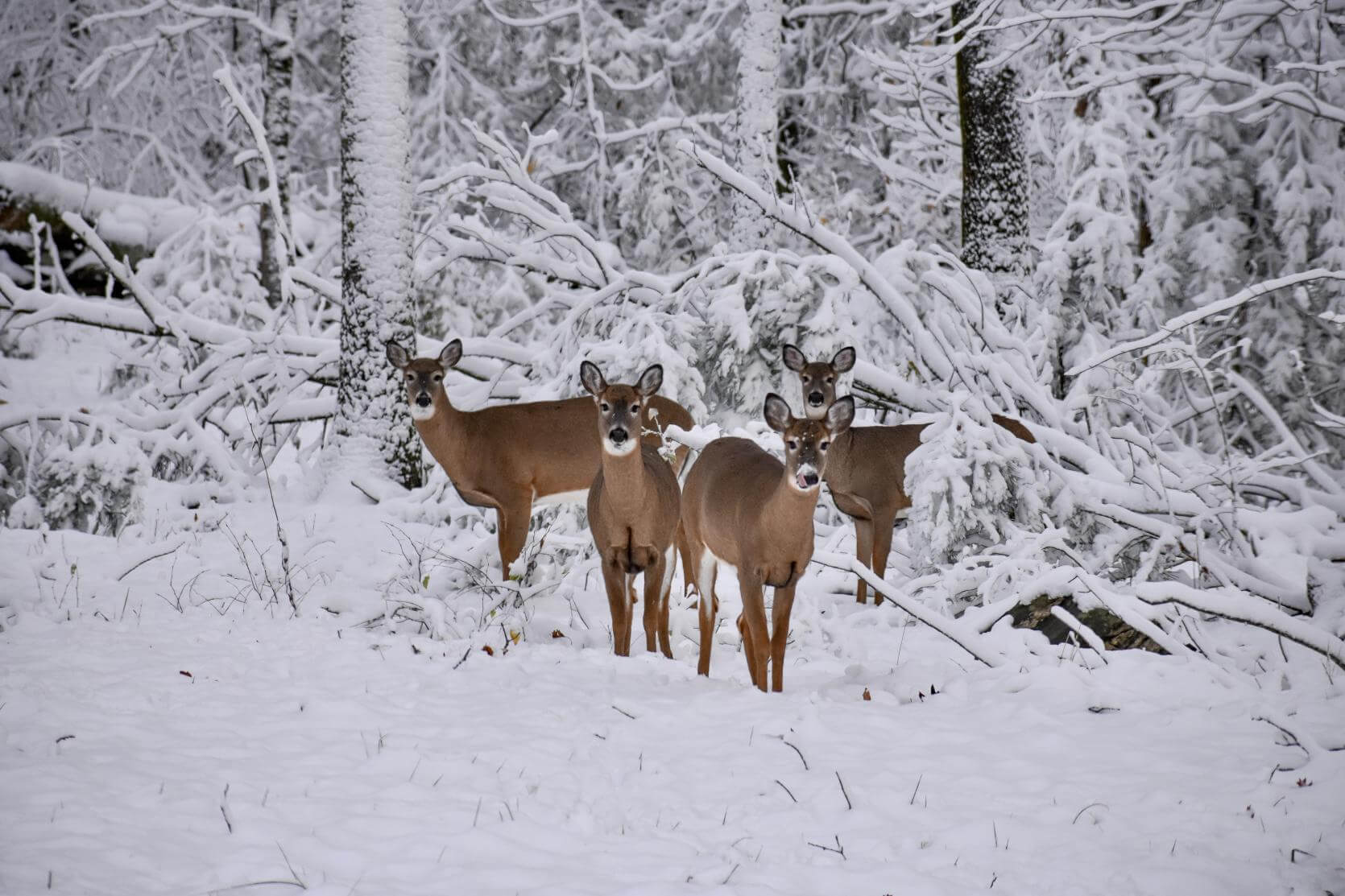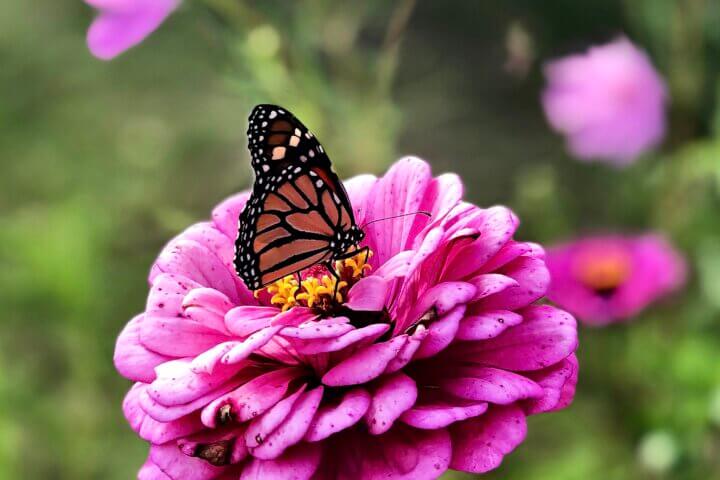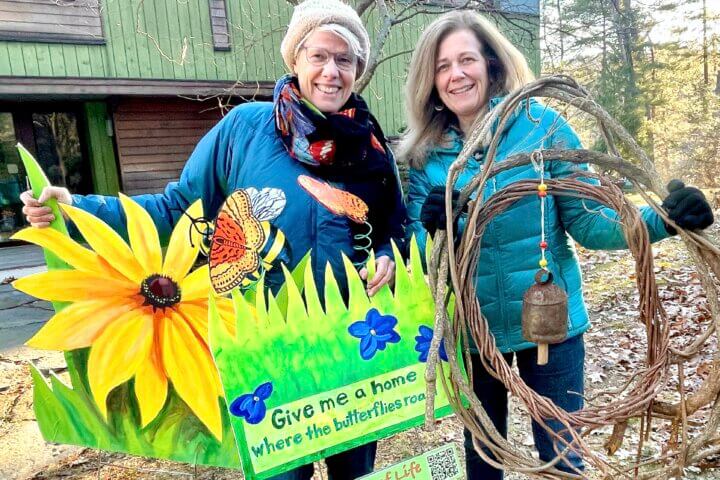An arctic blast a few weeks ago brought nighttime temperatures of -25 to some parts of New England. Brrrr. While we humans can cheat winter’s wrath in our warm, insulated homes, wild animals have no “indoors” to retreat to. Yet most survive these deep freezes. How do they do it?
Birds have a fine layer of “down” under their outer feathers. When temperatures plummet, they puff themselves up, trapping warm air against their bodies, as a barrier against the cold. Did you know that goose down has the highest warmth-to-weight-ratio of any material on earth?
Most birds also have a unique adaptation called “concurrent heat exchange” to protect their exposed feet. Arteries with warm blood run directly next to veins in their feet moving cooled blood back to the heart, transferring heat in the process. Ever wonder why ducks on ice overnight don’t freeze in-place? Now you know.
On very cold nights, birds will shelter in the nook of a tree or a crevice somewhere. But they cannot feed at night, so they must replenish their energy by feeding all day. But how do they find food in a frozen winter landscape?
Many local birds like jays, chickadees, nuthatches and titmice eat food they “cached” or hid earlier in the season, remembering these locations months later. And unused seed caches are often the first shoots to pop up in the spring, meaning birds replant their own food sources!
Cold blooded animals (called ectotherms) like our local frogs, toads, snakes, turtles and salamanders burrow themselves into the leaves or under the mud and enter “brumation” when the cold arrives, dropping their vitals to almost undetectable levels. Then, miraculously, each spring, they reawaken and emerge unscathed.
Of the furred animals in New England, only 7 hibernate in winter. Bats, jumping mice, chipmunks, woodchucks, skunks, raccoons and black bears all hunker down in caves and dens, entering a sleepy state of reduced respiration and cardiac activity called “tupor”. In hibernation, they live only off stored fat.
But many other local warm-blooded animals do not hibernate and survive bitter cold snaps in a variety of ways. Nearly all fatten up in the fall (called hyperphagia) and this extra fat layer helps repel the bitter cold. Coyotes and foxes shelter in underground dens and rely on winter fur several inches thicker than their summer coats to stay warm. Beavers can snuggle in their mud-packed lodges, eating tender bark gathered earlier in the season and cold-stored underwater. When the weather turns frigid, gray squirrels stay curled up in snug treetop leaf nests called “dreys”. Rabbits burrow into the deepening snow and use its insulating properties when it gets very cold.
Deer and moose change their digestive systems to handle woody twigs and bark and shelter together in stands of dense evergreen when a deep freeze is on – called “yarding”. They grow a winter undercoat of hollow hair that traps heat so efficiently that snow often sits on their backs, unmelted. Native Americans used deerskin and its hollow hair as effective cold weather clothing. At one point in history a single buckskin was worth about $1.00. This is where the term “a buck” comes from.
But very extreme cold spells have a harsh side too, as sick or weak animals sometimes succumb to the elements. Biologists call this “winter kill” and, in this way, the cold snaps strengthen all species over time, by rewarding the strongest and best-prepared with survival.
In a system that wastes nothing, other animals benefit from winter kill. Coyotes, foxes, fishers, crows, and raptors scavenge the carcasses (called carrion), getting a needed boost. The bones of these animals provide calcium necessary to rodents and studies have shown that the nutrients from decomposing carrion benefits forest plant life and insect biodiversity, when the warm days return.
While it may be hard for those of us long-removed from living outside to appreciate, bitter cold snaps are normal and wild animals are equipped to survive them. And they play a role in maintaining the long-term strength of all wild species.
Until next month, I hope you will bundle up and spend some Time Outdoors with your family. And if you are wearing a warm puffy down jacket, take comfort in knowing that the chickadee you spot will puff up their down feathers to stay warm and toasty too, when darkness falls and the temperature drops.





